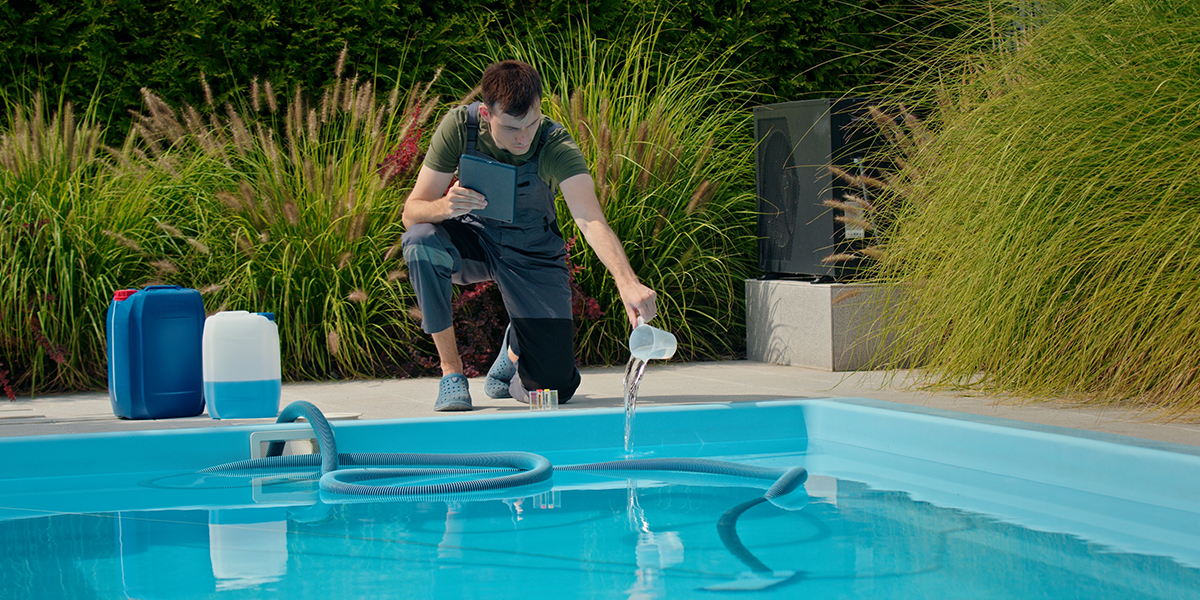Pool Maintenance for Beginners: A Beginner’s Guide to pH, Chlorine and Alkalinity

Getting your head around pool chemistry can seem confusing at first, but it’s easier than it looks. If you’ve recently installed a pool or taken over its care, understanding the basics of pool maintenance for beginners starts with three key elements: pH, chlorine, and alkalinity.
These three levels work together to keep your water clean, safe, and crystal clear. In this guide, we’ll walk you through what each one does, why it matters, and how to keep everything in balance — without overcomplicating it.
What Is pH and Why Does It Matter?
pH is a measure of how acidic or alkaline your pool water is. The ideal pH range for pool water is 7.2 to 7.6 — slightly on the alkaline side of neutral.
- Too low (acidic) = can irritate skin and eyes, corrode metal fittings, and damage pool surfaces.
- Too high (alkaline) = can reduce chlorine effectiveness and cause cloudy water or scale buildup.
You’ll want to test your pool water regularly using a test strip or kit. If pH is off, you can use pH increasers (sodium carbonate) or decreasers (sodium bisulphate) to correct it.
What Chlorine Does and How to Use It Safely
Chlorine is the sanitiser — it kills bacteria, viruses, and algae. It’s absolutely essential to safe swimming, especially in warmer months.
There are a few types of chlorine commonly used in Australian pools:
- Liquid chlorine
- Chlorine tablets
- Saltwater chlorinators (which convert salt to chlorine)
The ideal free chlorine level is 1–3 ppm (parts per million). Too low, and the water becomes unsafe. Too high, and it can irritate skin or damage pool gear.
One of the best things you can do as part of pool maintenance for beginners is to invest in a reliable chlorine test kit and keep a consistent schedule — especially after heavy use, rain, or hot weather.
Alkalinity: The Unsung Hero
Alkalinity stabilises your pH. When total alkalinity is too low, your pH can swing wildly. When it’s too high, the water becomes cloudy, and it’s hard to adjust pH levels.
- The ideal range for total alkalinity is 80–120 ppm.
You can raise alkalinity with sodium bicarbonate (bicarb soda — yes, the same stuff in your pantry!) and lower it using acid, often the same chemical used to reduce pH.
Keeping alkalinity steady is a big part of stress-free pool maintenance for beginners — it makes the rest of your chemistry much easier to manage.
Keeping It All in Balance
Think of pH, chlorine and alkalinity like a three legged stool, if a leg breaks the stool falls over
Here’s a simple weekly routine:
- Test water using strips or a digital kit.
- Adjust chlorine levels if needed.
- Check and balance pH and alkalinity.
- Clean the skimmer, brush the pool walls, and run your filter.
You don’t need a chemistry degree — just consistency.
Why It Matters
Poor water balance can lead to:
- Green or cloudy water
- Skin or eye irritation
- Damaged pool surfaces and equipment
- Wasted money on chemicals that don’t work properly
But with a basic understanding and regular upkeep, pool maintenance for beginners can be simple, affordable, and low-stress.
Need Help? Freestyling Pool Shop Has You Covered
At Freestyling Pool Shop, we help new pool owners across Australia keep their pools safe, sparkling and ready to enjoy. Whether you need water testing kits, chlorine, or expert advice, our team is here to make pool maintenance for beginners as easy as possible.
